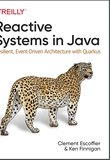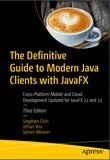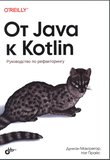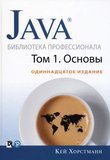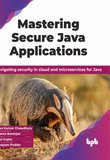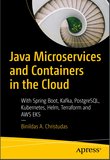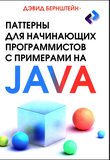-
.NET (.NET Core)
-
1C
-
APL
-
AWK
-
Agda
-
Agile/Scrum
-
Alef
-
Assembler
-
Basic
-
Beta Programming Language
-
Big Data/DataScience
-
C
-
C#
-
C++
-
CSS
-
Cobol
-
Crystal
-
D
-
Dart
-
DataBase (SQL)
-
Delphi
-
F#
-
Flutter
-
Fortran
-
GPT/AI/ИИ
-
GameDev
-
Git
-
Go (Golang)
-
HTML
-
Hacking and Security
-
Haskell
-
Java
-
JavaScript (JS)
-
Julia
-
Kotlin
-
Machine Learning (ML)
-
Natural language processing (NLP)
-
PHP
-
Pascal
-
Python
-
R
-
Ruby
-
Rust
-
Scratch
-
Swift
-
UML
-
UX/UI
-
Visual Basic
-
XML
-
АСУ
-
Проектирование/System Design
-
Сети/Network
-
Схемотехника/электронные схемы
-
.NET (.NET Core)
-
1C
-
APL
-
AWK
-
Agda
-
Agile/Scrum
-
Alef
-
Assembler
-
Basic
-
Beta Programming Language
-
Big Data/DataScience
-
C
-
C#
-
C++
-
CSS
-
Cobol
-
Crystal
-
D
-
Dart
-
DataBase (SQL)
-
Delphi
-
F#
-
Flutter
-
Fortran
-
GPT/AI/ИИ
-
GameDev
-
Git
-
Go (Golang)
-
HTML
-
Hacking and Security
-
Haskell
-
Java
-
JavaScript (JS)
-
Julia
-
Kotlin
-
Machine Learning (ML)
-
Natural language processing (NLP)
-
PHP
-
Pascal
-
Python
-
R
-
Ruby
-
Rust
-
Scratch
-
Swift
-
UML
-
UX/UI
-
Visual Basic
-
XML
-
АСУ
-
Проектирование/System Design
-
Сети/Network
-
Схемотехника/электронные схемы
Меню
Core Java: Made Simple
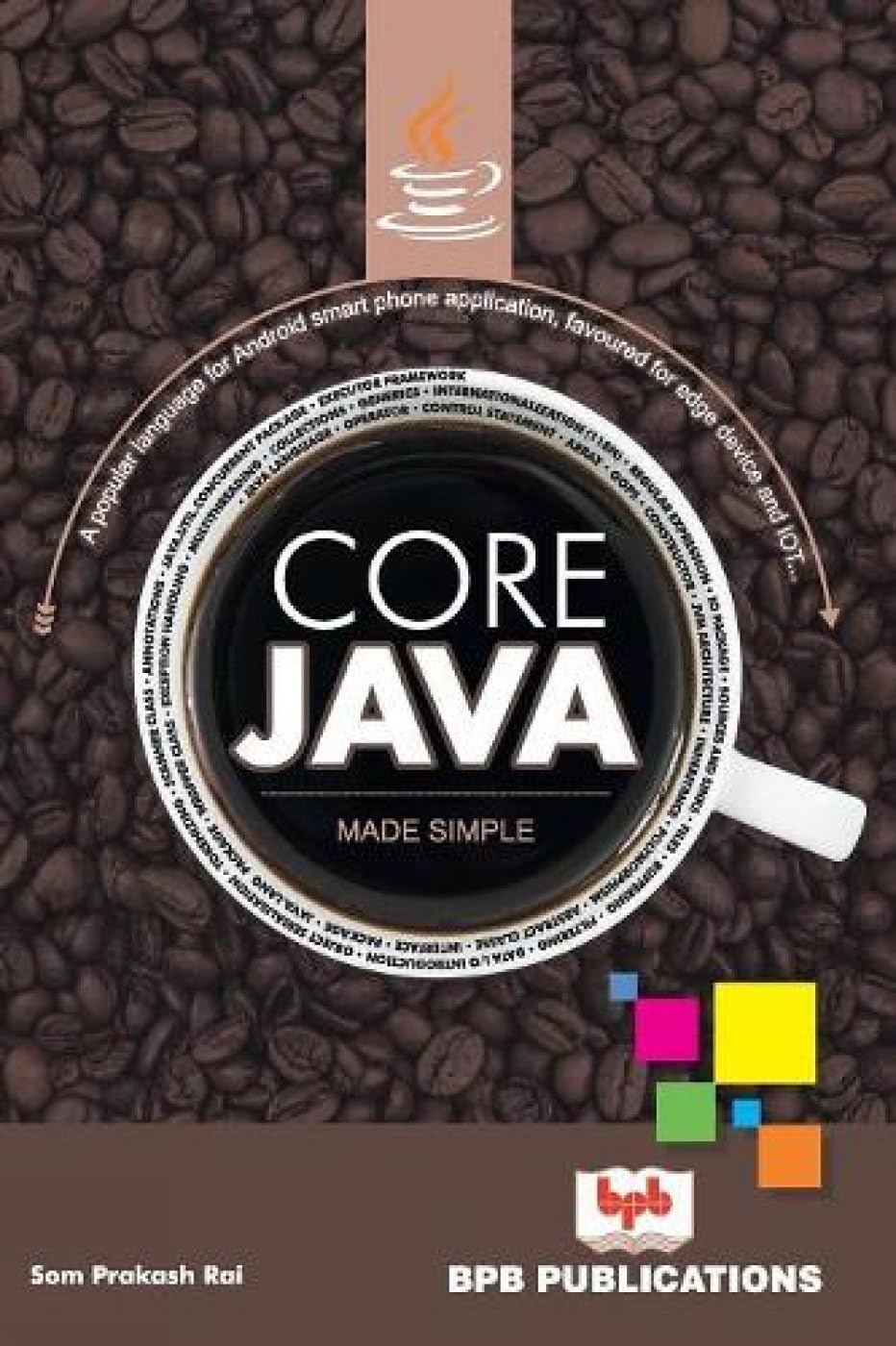
Автор: Rai Som Prakash
Дата выхода: 2023
Издательство: BPB Publications
Количество страниц: 956
Размер файла: 4,1 МБ
Тип файла: PDF
Добавил: codelibs
Chapter 1 Introduction to Core Java
1.1 Introduction
1.2 Difference Between C Programming and Java Programming
1.3 Important Terms to Remember
1.4 Install The JDK
1.4.1 Setting Path
1.4.2 How to Compile Java Program
1.4.3 Running The Java Program
Chapter 2 Java Language
2.1 Character Set
2.2 Data Types
2.3 Keywords
2.4 Identifiers or User Define Words
2.5 Variable
2.6 Constant
2.7 Literals
Chapter 3 Operator
3.1 What is Operators
3.2 Types of Operators
3.3 Type Casting
Chapter 4 Control Statement
4.1 Introduction
4.2 Types of Control Statement
4.2.1 Conditional Control Statement
4.2.2 Looping Control Statement
Chapter 5 ARRAY
5.1 Introduction
5.2 Types of Array
5.3 Multidimensional Array
Chapter 6 OOPS Concept
6.1 Introduction
6.2 Class
6.3 Object
6.4 Variable
6.5 Blocks
6.6 Internally by the JVM
6.7 Class Loader Concept
6.8 Methods
6.9 Volatile Modifier
6.10 Method Overloading
Chapter 7 Constructor
7.1 What is Constructor
7.2 Final Variable and Static Final Variable
Chapter 8 JVM Architecture
8.1 Virtual Machine
8.2 JVM
8.3 “this” Keyword
8.4 VAR-ARG Method
8.5 Local Variable
8.6 Local Block
8.7 Assertion
Chapter 9 Inheritance
9.1 What is Inheritance
9.2 Difference between this and super keyword
9.3 S-A Relationship
9.4 Composition vs Aggregation
9.5 Coupling
Chapter 10 Polymorphism
10.1 What is Polymorphism
10.2 Method Overriding
Chapter 11 Abstract Class
11.1 What is Abstract Class
Chapter 12 Interface
12.1 What is an Interface
12.2 Multiple Inheritance Through Interface
12.3 Inner Class
12.4 Adapter Class
Chapter 13 Package
13.1 What is Package
13.2 Import Package
Chapter 14 JAVA.LANG Package
14.1 Introduction
14.1.1 Java.Lang.Object Class
14.1.2 Java.Lang.String Class
14.1.3 Java.Lang.StringBufferclass
14.1.4 Java.Lang.System Class
Chapter 15 Wrapper Class
15.1 What are Wrapper Class
15.2 Utility Method
15.2.1 ValueOf() Method
15.2.2 xxxValue() Method
15.2.3 ParseXxx() Method
15.2.4 toString() Method
Chapter 16 Exception Handing
16.1 Introduction
16.2 Exception
16.2.1 Handling Exception by Writing the Multiple Try and Catch
16.3 Finally Block
16.4 Types Of Exceptions
16.5 “throw” Keyword
16.6 “throws” Keyword
16.8 Method
16.9 Difference between class not found Exception & No Class Deffound Error
Chapter 17 Multithreading
17.1 What is Multithreading
17.2 Java Thread
17.3 User Define Thread
17.4 Thread Priority
17.5 Thread Life Cycle
17.6 Synchronization
17.7 Inter Thread Communication
17.8 Lazy Thread
17.9 Deadlock vs Starvation
17.10 How to kill a thread in the middle of the line
17.11 Suspend and Resume Method
17.12 RACE Condition
17.13 Thread Local (1.2 v)
17.14 Green Thread
17.15 Thread Local
17.16 Constructor
17.17 Java.util.concurrent.lock package
17.18 Lock(I)
17.19 Reentrantlock
17.20 Thread Pools
17.21 Callable and Future
Chapter 18 Collections
18.1 Java.util package or Collection Framework
18.2 Collection
18.3 List Interface
18.4 SET
18.5 Map
18.6 Difference Between Comparable and Comparator
18.7 String Tokenizer
18.8 Has More Token
18.9 Difference Between Enumeration and Iterator
18.10 Difference Between Iterator and List Iterator
18.11 AddElements
18.12 Timer and Timer Task
18.13 Methods
18.13.1 Stack
18.13.2 Null Acceptance
18.14 Entry Interface
18.15 Identity Hash Map
18.16 Week Hash Map
18.17 Sorted Map
18.18 Properties
18.19 Queue
18.20 Properties
18.21 Queue
18.22 Priority Queue
18.23 Navigable Set
Chapter 19 Generics
19.1 Introduction
19.2 Generics Classes
19.3 Bounded Types
19.4 Generic method and wild-card character
19.5 Communication with non generic code
Chapter 20 Internationalization (118N)
20.1 Introduction
20.2 Locale
20.3 Number Format
20.4 Setting Maximum,Minimum,Fraction and Integer digits
20.5 Data Format
20.6 System Properties
Chapter 21 Regular Expression
21.1 Introduction
21.2 Patten Class
21.3 Matcher
21.4 Character Classes
21.5 Quantifiers
21.6 Pattern Class Split() Method
Chapter 22 IO Package
22.1 Introduction
22.2 Stream
22.3 What to use
22.4 Filtering
22.5 Storing data records
22.6 Exceptions
22.7 What are Readers
22.8 What are Writers
Chapter 23 Sources and Sinks
23.1 Introduction
23.2 Byte Arrays
23.3 Pipes in Java code
23.4 Char Arrays
Chapter 24 Files
24.1 Introduction
24.2 The File Classes
24.3 Constructors
24.4 Test Methods
24.5 Action Methods
24.6 List Methods
Chapter 25 Buffering
25.1 What is Buffering
25.2 Buffered Reader and Buffered Writer
Chapter 26 Filtering
26.1 What is Filtering
26.2 Pushback
26.3 Checksumming
26.4 Digesting
26.5 Checksum Versus MessageDigest
26.6 Inflating and Deflating
26.7 ZipInputStream
26.8 ZipOutputStream
Chapter 27 Data I/O Introduction
27.1 What is Data I/O
27.2 Unicode Text Format
27.3 Random Access File
Chapter 28 Object Serialization
28.1 What is Object Serialization
28.2 How Object Serialization Works
28.3 Reading an Object From a File
28.4 Alternative Ways to read back
28.5 Add Serializable
28.6 Custom Serialization
28.7 Externalizable
28.8 Customized Serialization
28.9 Serialization With Respect to Inheitance
28.10 Externalization
28.11 Difference between Serialization & Externalization
28.12 Serial Version UID
Chapter 29 Tokenizing
29.1 Introduction
29.1.1 Using String Tokenizer
29.1.2 Stream Tokenizer
Chapter 30 Scanner Class
30.1 Introduction
30.2 Class Declaration
30.3 Examples of Interactive Input/Output in Java
30.4 Class Constructors
30.5 Class Methods
Chapter 31 Annotations
31.1 Introduction
31.2 Types of Annotations
31.3 Built-In Annotations
Chapter 32 Java.util.concurrent package
32.1 The Java.util.concurrent
32.2 Other Atomic Classes are
Chapter 33 Executor Framework
33.1 Introduction
The book is written in such a way that the concepts are explained in detail, paying sufficient attention to examples. The corresponding analogies are given throughout the text to clarify the topics.
The book will help you understand each java topic practically. It will help you in the development of software and websites, as it is necessary to have deep practical knowledge. The book covers all topics that are important from the point of view of interviews, certification and exams, and not a single topic was left untouched.
This book promises to be a very good starting point for beginners and an asset to advance users too. Difficult concepts of Core Java are given in an easy way, so that the students are able to understand them in an efficient manner.
